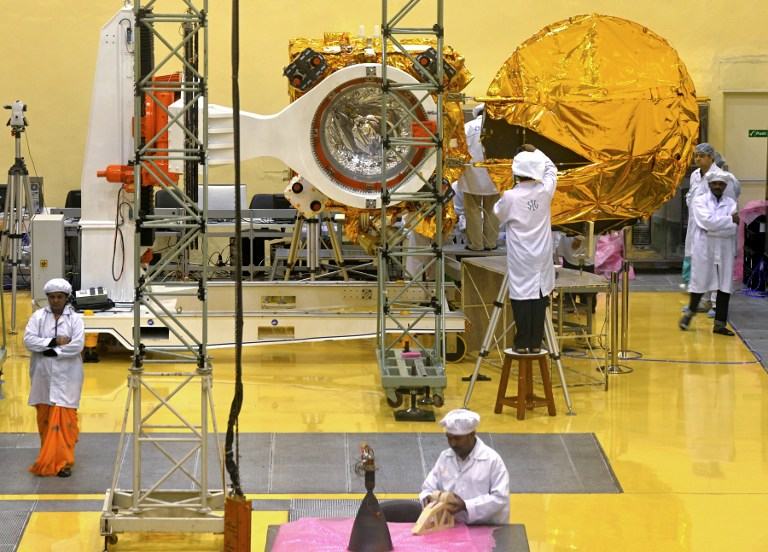From innovating with limited resources in the 1960s to launching a record 104 satellites in a single mission last year, Isro and India have come a long way in this space journey.
It was a significant date in the history of the Indian space programme. On 21 November 1963, the launch of the first sounding rocket—assembled inside a church building—from the Equatorial Rocket Launching Station in Thumba, Kerala, marked the beginning of our space journey. It remains a milestone.
Fifty-five years later, the Indian Space Research Organisation (Isro) is working towards our second lunar exploration mission, Chandrayaan-2, next year, and more importantly, our first ever manned space mission, Gaganyaan, in which a three-member crew will spend seven days in space in low earth orbit (LEO). This mission is expected to lift off by 2022 and cost billions of rupees.
How special is this? Quite special.
You only need to look back at the long, distinguished history of manned space flight to understand the thrill and achievement that accompanies it.With the International Space Station (ISS) completing 20 years in orbit on 20 November, we decided to make it the focal point of our space special. Nasa calls the ISS one of the most ambitious international collaborations ever attempted and the most politically complex space exploration programme ever undertaken. Astronauts from 18 countries (and counting) have visited the space station so far. It is a marvel of technology and the result of years of cooperation between the scientific research community and international space agencies.
There are, in fact, talks of sending an Indian astronaut to the ISS for a short training mission in 2022. Hopefully, we can one day have the resources and the required technical advancements to become one of the participating nations in the ISS and other future space station missions.
The good news is, the signs are extremely encouraging. As you will read in this issue, Indians are not only leading critical space missions slated for the near future but also making a mark in areas such as space design. Some of the brightest ideas for new and miniature satellite designs (CubeSats) in recent years have emerged from India. We have also looked at some key historical references of India’s participation in space research, dating back to as far as the 1960s.
Our fascination with space goes beyond the realm of science and extends into pop culture. Our stories look at how movies and art have shaped our understanding of space and how space debris is being reimagined with the help of ingenious design solutions.
In the vastness of space, what makes us unique is our desire to know more about the universe we inhabit. So, our quest to reach the farthest corners of the cosmos shouldn’t stop. The fields of interplanetary travel, space colonization and deep-space voyages have so much to offer. We can only improve and pick up pace. While addressing the India-United States Conference on Space Science Application and Commerce in New Delhi in 2004, the late A.P.J. Abdul Kalam, one of the key minds behind the inception of India’s space dream, had said: “Thinking beyond our planet is an essential trait. The thought itself elevates the person. The person is transformed into a creative state. Creativity indeed is the foundation of discovery and inventions.”
From innovating with limited resources in the 1960s to launching a record 104 satellites in a single mission last year, Isro and India have come a long way in this space journey. With Chandrayaan-2 and Gaganyaan very much in our line of sight, the only way ahead is forward. As Neil Armstrong (played by Ryan Gosling) said in the recent Hollywood movie First Man, “When you get a different vantage point, it changes your perspective.” Here’s hoping that this space special gives you a new vantage point to not only look at India but the world’s journey to explore space.
Source: LM
Image Courtesy:Alochona
You may also like
-
New Heat-Based Approach To Cancer Treatment Can Reduce Chemotherapy Doses
-
Scientists Take A Major Step Towards Unification Of Classical & Quantum Gravity
-
India Graphene Engineering and Innovation Centre (IGEIC) Under the Vision of Viksit Bharat@2047 Launched
-
New High-Performance Gas Sensor can Monitor Low Level Nitrogen Oxides Pollution
-
Antidepressant Drug can be Repurposed for Treating Breast Cancer
